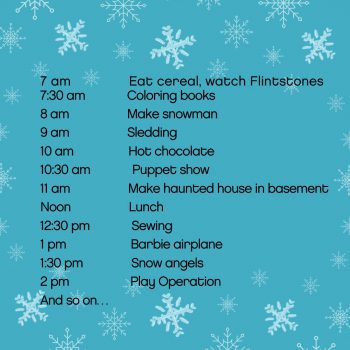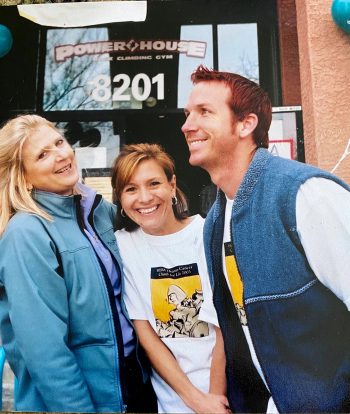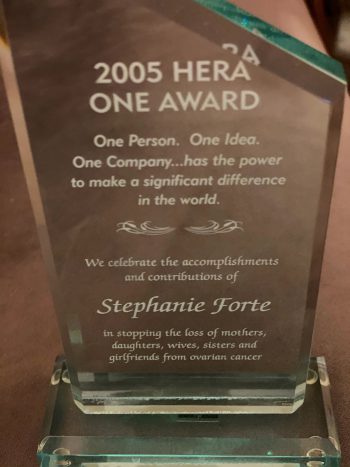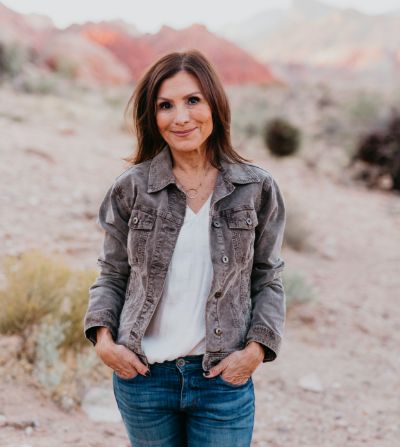I’ve always been a planner. I’ve been chunking my time since I was about 7 years old. When school was canceled because of snow, the first thing I did was to figure out a plan to maximize the day. From my first breath, it seems I’ve felt this sense of urgency about life. Even at age 7, time seemed to be moving too fast, and there was much to be done. So, my snow-days looked something like this: ⠀⠀

The great thing about the 1970s was that most parents believed that children should be seen and not heard. And, if you were not seen, well, that was even better. With puppet shows to write and haunted houses and snow angels to create, who had time for parents? We were busy.⠀⠀⠀⠀⠀⠀⠀
I admit, some neighborhood kids got mad when I’d announce it was time to switch to a new activity. How could they not feel the gravity of the situation? Time was running out, and we had just one day to make a difference.

When I met Sean Patrick while climbing in 1991, we became fast friends. She was 16 years older than me and lived her life by cramming as much as possible into every minute. Business, travel, sports, home, and community, Sean nailed it. I wanted to be just like her.
Plus, I was sure she had that same kind of snow-day list.⠀⠀⠀⠀
In 1997, Sean was handed a death sentence, stage 4 ovarian cancer, and 4-6 weeks to live. She’d fought like hell to get diagnosed, but it took years for doctors to take her seriously. That was unacceptable and had to change.
In 2002, a collective sense of urgency generated energy that would change lives. The HERA Ovarian Cancer Foundation was born.
To be honest, we didn’t have any idea of how to build or run a nonprofit. But our need to change a situation, namely women being diagnosed too late, left no room for us to consider our level of experience. Women were dying, we didn’t have that luxury. But we knew how to make lists and plans, so we started there.
Recently, I got an email from HERA about the Climb for Life 2020. In 2002, we didn’t consider 2020; it would have been overwhelming. Long-range planning can be great, but at our start had we thought that far ahead, we may have paralyzed ourselves. Instead, we focused on our daily lists to get us to the next short-term goal, which would contribute to the larger goal of creating a movement where women felt empowered to take control of their health.⠀⠀⠀
A few years after Sean’s death in 2009, that feeling came back; it was time to change activities and start a new organization. I stepped away from HERA; it was in good hands.⠀⠀⠀

Today, the HERA Foundation continues to make a difference in funding ovarian cancer research at places like MD Anderson and generates awareness of symptoms. HERA still empowers women to take control of their health —and that was the point.⠀⠀
I was the 2005 recipient of HERA’s Power of One award. It was created based on the idea that it takes just one person to make a difference. I’d add to that, it takes only one day, and one hour at a time to get started.⠀⠀⠀⠀
If you’re the kind of person who feels compelled to make a change in the world, start with a list of what you can do today. Tackle that first—that’s what we did.
And 18 years later, I’d say it turned out to be a pretty good plan.
To learn more about the HERA Foundation, visit www.herafoundation.org.
(Another stay-at-home photo organizing project inspired post.)
